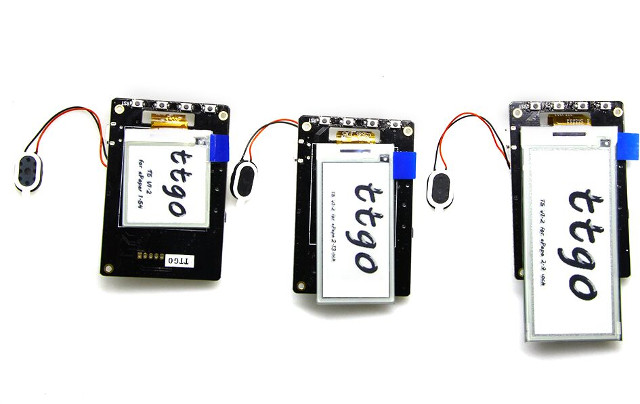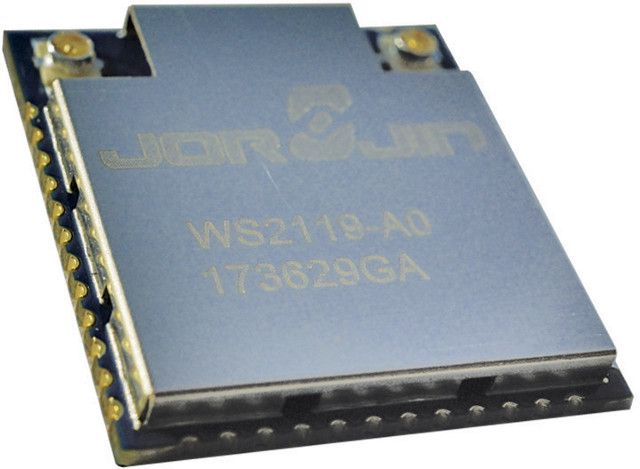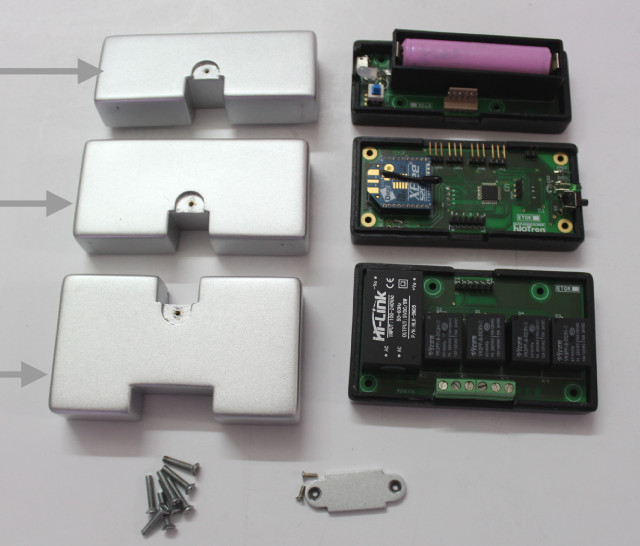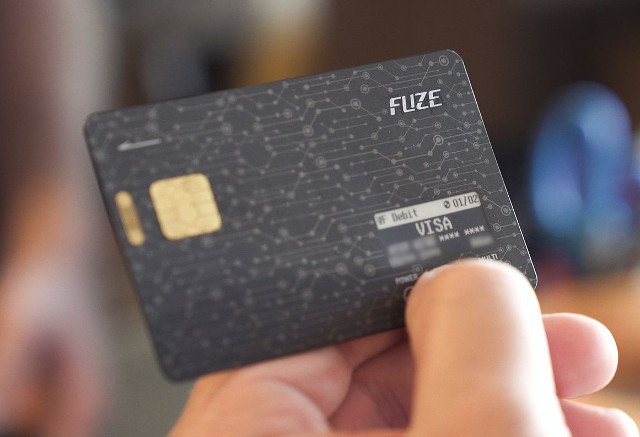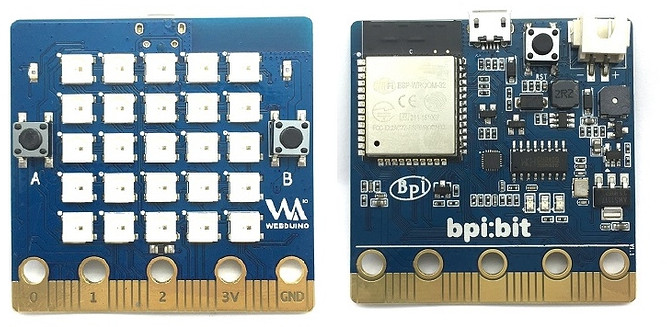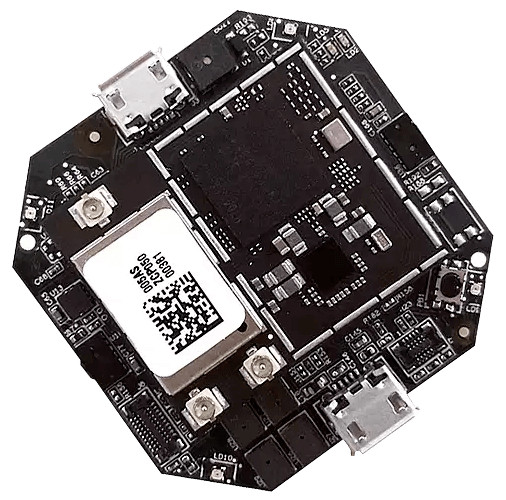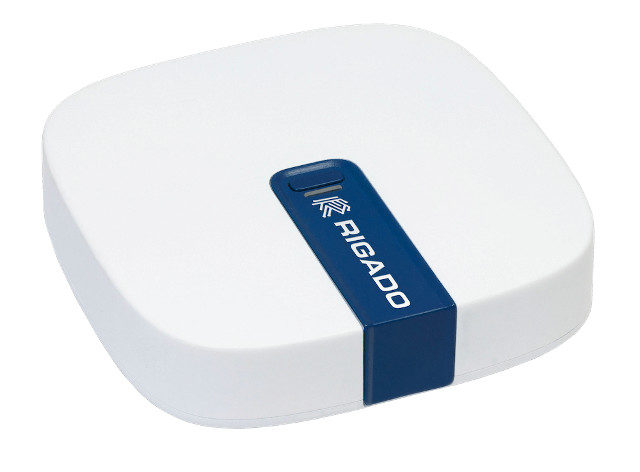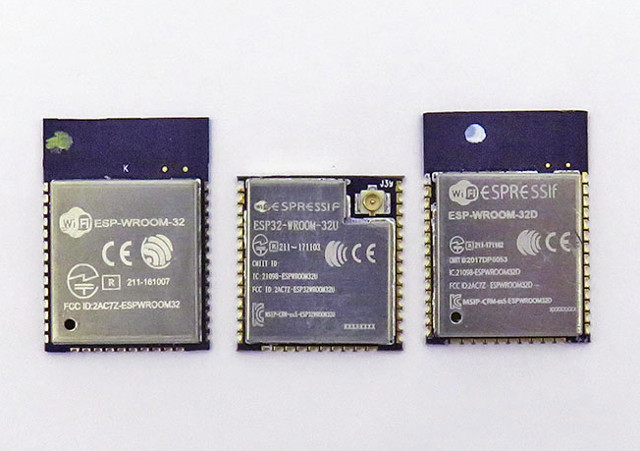Lilygo has made another ESP32 board part of their TTGO family with TTGO T5 board powered by Espressif System ESP32 WiFI & Bluetooth SoC, and offering a choice of ePaper displays from 1.54″ to 2.9″, as well as built-in speaker. TTGO T5 board specifications: SoC – Espressif ESP32 dual core Tensilica LX6 processor with WiFi 802.11 b/g/n and Bluetooth 4.1 LE Storage – micro SD card slot Display (one of the other) 1.54″ 200×200 black & white ePaper display; Full refresh time – 2 seconds 2.13″ 250×122 black & white ePaper display; Full refresh time – 2 seconds 2.7″ 264×176 black & white ePaper display; Full refresh time – 6 seconds 2.9″ 296×128 black & white ePaper display; Full refresh time – 2 seconds Viewing angle – >170° Power Consumption – Refresh: 26.4mW(typ.); standby: <0.017mW Connected via SPI interface Audio – Mini Speaker Expansion – 24-pin header with GPIO, UART, […]
Jorjin WS2118/WS2119 is a Sigfox & Bluetooth LE Module Based on STMicro BlueNRG-1 & S2-LP Chips
Jorjin WS211X is a family of certified dual radio modules combining Sigfox wireless technology thanks to STMicro BlueNRG-1 BLE System-on-Chip (SoC) and Bluetooth Low Energy (BLE) using STMicro S2-LP sub-1GHz RF transceiver. Two models are currently available: WS2118-00 certified for Sigfox regions RCZ1 (Europe, Middle East, South Africa) and RCZ3 (Japan), and WS2119-A0 for regions RCZ2 (USA, Mexico, Brazil) and RCZ4 (Australia, New Zealand, Taiwan, Hong Kong, Singapore, Argentina). Jorjin’s WS211x specifications: Connectivity Bluetooth LE STMicro BlueNRG-1 Arm Cortex M0 @ 16 MHz with 160 kB flash, 24 kB RAM with retention Up to +8dBm BLE RF output power Sigfox STMicro S2-LP sub-1GHz transceiver WS2118-A0 – Up to +16 dBm sub-1GHz RF output power WS2119-A0 – Up to +27dBm sub-1GHz RF output power Receiver sensitivity – Up to -88dBm (BLE) and -130dBm (Sub-1GHz). I/Os – 38-pins package. Security – STSAFE-A1SX for SIGFOX secure element Power Supply – 2.0 to 3.6V Dimension […]
hIoTron Modular & Enterprise IoT Development Kit is Designed for Fast Prototyping
hIoTron modular & enterprise IoT development kit is described by the company has a “fully pre-programmed prototyping kit for quickly building and testing your IoT concept” with plug-n-play module allowing for flexible prototyping. Beside the hardware comprises of a gateway and nodes, the kit also integrates with the company’s enterprise IoT Platform enabling easy design of custom mobile application & GUI dashboard. The company offers standard, advanced, and custom kits, but to keep things simple, let’s focus on the content of their standard kit first: Hi-Gate IoT gateway: WiSoC – Texas Instruments CC3200 Arm Cortex-M4 @ 80 MHz with 1MB flash, 256KB RAM Storage – 1MB serial flash, 512KB EEPROM Connectivity 802.11 n/g/n Wi-Fi, 2G GSM/GPRS (optional 3G/4G), ZigBee, BLE 4.0, sub-1GHz RF/NON RF to REST/MQTT gateway Expansion – 2x GPIO port pins, 2x analog port pins Power Supply – 9-12V DC 3x modular Hi-Nodes (up to 25 supported per […]
FUZE Bluetooth Credit Card is Vulnerable to Hacking over Bluetooth
FUZE Card is a Bluetooth enabled card with ePaper display that can store up to 30 real credit card. You’d program credit cards into it via Bluetooth Smart (BLE) using a smart phone app, and use it like a normal credit card while paying, after selecting the card you want to use. It’s more convenient than carrying many cards, and more secure since part of the number are hidden (shown as stars ****), so whoever get your card can’t easily make a copy of the information. A problem however is that according to ICE9 Consulting, there’s a security vulnerability that allows credit card numbers to be stolen via Bluetooth: CVE-2018-9119. The full details can be found on ICE9 blog post. They started to make a X-Ray to find out about the main components see (photo below), and the reverse-engineered the Bluetooth protocol using an Android smartphone, and software tools such as Burp […]
$19.50 BPI:bit ESP32 Board is Inspired by BBC Micro:bit, Compatible with Webduino and Arduino IDE
BBC micro:bit board for education was first unveiled in 2015, before starting to be given away to UK students, and later sold for about $19 in 2016. The board supports Bluetooth connectivity, includes an array of 25 LEDs, as well as a specific 20-pin edge connector also featuring 5 large holes (rings) for 3 I/Os and power. So far I had not seen any clones or alternative boards inspired from the design, as we see for Arduino or Raspberry Pi boards. But SinoVoIP (Banana Pi) has changed that with their BPI:bit clearly inspired from the Micro:bit, but offering both WiFi and Bluetooth connectivity via an ESP32 module. Hardware specifications: Wireless module – ESP-WROOM-32 module with WiFi and Bluetooth LE connectivity LEDs – 25x RGB LED array Sensors – 2x light sensors, thermistor, 9-axis accelerometer / gyroscope / compass (MPU-9250) Expansion – 3 digital/analog I/O rings, 3V/GND ring, 20-pin edge connector […]
RushUp KITRA Board Family is based on Samsung Artik 020, Artik 520/530, or Artik 710 Modules
Samsung first announced their Artik IoT modules almost three years ago, and until recently most Artik related products or development kits came from Samsung themselves, with no third party involved. But this has started to change recently with announcements such a Seeed Studio Eagleye 530s low cost development board based on Artik 530 module, and Resin.io Project Fin combining RPI CM3L module with an Artik 020 module for low power Bluetooth connectivity. But as I flicked through Resin.io supported hardware, I discovered they also supported Linux powered Artik 520 and Artik1020 module, as well as some new “KITRA” boards I had never heard of, and if we visit RushUp company website, we can see they have a bunch of Kutra boards and one IoT gateway based on Artik modules: KITRA 520 – Samsung ARTIK 520 product accelerator for advanced IoT KITRA 710 – Samsung ARTIK 710 product accelerator for advanced multimedia […]
Rigado Vesta IoT Gateway Runs Linux and Zephyr OS, Supports Bluetooth 5, 802.15.4, WiFi, Ethernet and Cellular Connectivity
I’ve recently read several open source software news related to Rigado IoT gateway, starting with Canonical announcement last month, that the gateway would ship with Ubuntu Core starting in summer 2018, and a few days ago it popped up again during Linaro CEO keynote at Linaro Connect HK 2018, as one of the first commercial devices to run the Zephyr OS, specifically its fully open source Bluetooth stack on a Nordic nRF52 chip. Rigado Vesta IoT gateway is not exactly new, as it was first announced in December 2016. The hardware relies on an NXP i.MX 6UL Cortex A7 processor, up to 256MB RAM, 4GB eMMC flash, and includes built-in support for dual band WiFi, Bluetooth Smart, Bluetooth 5/4.2, 802.15.4 (Thread), Fast Ethernet with PoE, as well as optional support for a cellular LTE Cat 1 modem. Rigado gateway hardware specifications: Processor – NXP i.MX6 UltraLite (G3) Arm Cortex A7 […]
ESP32-WROOM-32D / ESP32-WROOM-32U WiFi & Bluetooth Modules Deliver Better RF Performance
ESP-WROOM-32 is likely the most popular ESP32 WiFi + Bluetooth module on the market, but a few months ago, Espressif Systems unveiled two variants named ESP32-WROOM-32D / ESP32-WROOM-32U, which are based on ESP32-D0WD (5x5mm package) instead of ESP32-D0WDQ6 (6x6mm package), and are said to offer better RF performance ESP32-WROOM-32D is the most similar to ESP-WROOM-32 since it also comes with a PCB antenna, while ESP32-WROOM-32U is much smaller as it relies on an external WiFi/Bluetooth antenna via a u.FL connector. Both new modules are pin-to-pin compatible with ESP-WROOM-32 Key features: CPU – Espressif ESP32-D0WD dual core Tensilica processor Storage – 32Mbit SPI flash Crystal – 40 MHz Connectivity – Wi-Fi 802.11 b/g/n up to 150 Mbps, Bluetooth 4.2 LE I/Os – 38- catellagated pin with I/Os + GND plane Antenna ESP32-WROOM-32D – on-board antenna ESP32-WROOM-32U – u.FL connector for external IPEX antenna Dimensions ESP32-WROOM-32D – 18 x 25.5 x 3.1 […]


